This article possibly contains original research .(January 2012) |
This is a list of departure control system vendors.
This article possibly contains original research .(January 2012) |
This is a list of departure control system vendors.
In telecommunications, squelch is a circuit function that acts to suppress the audio output of a receiver in the absence of a strong input signal. Essentially, squelch is a specialized type of noise gate designed to suppress weak signals. Squelch is used in two-way radios and VHF/UHF radio scanners to eliminate the sound of noise when the radio is not receiving a desired transmission.
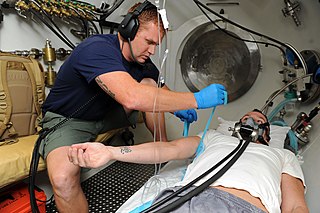
Decompression sickness is a medical condition caused by dissolved gases emerging from solution as bubbles inside the body tissues during decompression. DCS most commonly occurs during or soon after a decompression ascent from underwater diving, but can also result from other causes of depressurisation, such as emerging from a caisson, decompression from saturation, flying in an unpressurised aircraft at high altitude, and extravehicular activity from spacecraft. DCS and arterial gas embolism are collectively referred to as decompression illness.
A distributed control system (DCS) is a computerized control system for a process or plant usually with many control loops, in which autonomous controllers are distributed throughout the system, but there is no central operator supervisory control. This is in contrast to systems that use centralized controllers; either discrete controllers located at a central control room or within a central computer. The DCS concept increases reliability and reduces installation costs by localizing control functions near the process plant, with remote monitoring and supervision.
DCS may refer to:
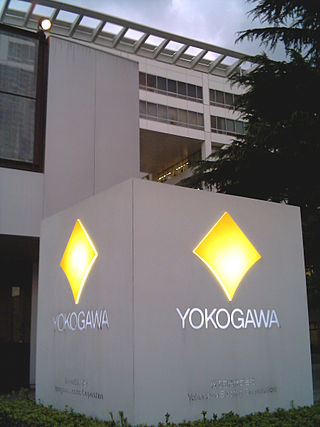
Yokogawa Electric Corporation is a Japanese multinational electrical engineering and software company, with businesses based on its measurement, control, and information technologies.
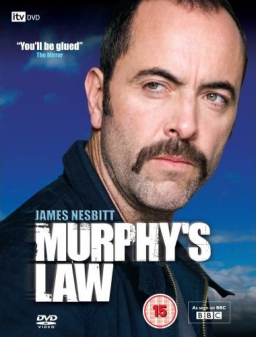
Murphy's Law is a BBC television drama, produced by Tiger Aspect Productions for BBC Northern Ireland, starring James Nesbitt as an undercover police officer, Tommy Murphy. There were five series of the drama, shown on BBC One. The first two were composed of individual stories. Series three, four and five were each single stories composed over multiple episodes. Colin Bateman adapted the pilot for a novel.
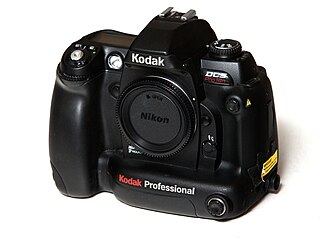
The Kodak Professional DCS Pro 14n is a professional Nikon F80 based F-mount digital SLR produced by Eastman Kodak. It was announced at the photographic trade show photokina in Germany during September 2002; production examples became available in May 2003.

The Kodak DCS 400 series was a series of Nikon based digital SLR cameras with sensor and added electronics produced by Eastman Kodak. It was part of Kodak's DCS line.

Transcranial direct current stimulation (tDCS) is a form of neuromodulation that uses constant, low direct current delivered via electrodes on the head. It was originally developed to help patients with brain injuries or neuropsychiatric conditions such as major depressive disorder. It can be contrasted with cranial electrotherapy stimulation, which generally uses alternating current the same way, as well as transcranial magnetic stimulation.
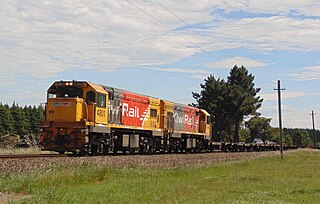
The New Zealand DC class locomotive is a type of diesel-electric mainline locomotive on the New Zealand rail network, operated by KiwiRail on freight trains, and formerly on long-distance passenger trains. The class was rebuilt from the DA class in the late 1970s and early 1980s, mainly in Australia. After the DA class, they were the most numerous class of diesel locomotive on New Zealand's railway network and remained numerically dominant until the mid-2010s when withdrawals began.
A digital cross-connect system is a piece of circuit-switched network equipment, used in telecommunications networks, that allows lower-level TDM bit streams, such as DS0 bit streams, to be rearranged and interconnected among higher-level TDM signals, such as DS1 bit streams. DCS units are available that operate on both older T-carrier/E-carrier bit streams, as well as newer SONET/SDH bit streams.
An industrial control system (ICS) is an electronic control system and associated instrumentation used for industrial process control. Control systems can range in size from a few modular panel-mounted controllers to large interconnected and interactive distributed control systems (DCSs) with many thousands of field connections. Control systems receive data from remote sensors measuring process variables (PVs), compare the collected data with desired setpoints (SPs), and derive command functions that are used to control a process through the final control elements (FCEs), such as control valves.

Ralph Marvin Steinman was a Canadian physician and medical researcher at Rockefeller University, who in 1973 discovered and named dendritic cells while working as a postdoctoral fellow in the laboratory of Zanvil A. Cohn, also at Rockefeller University. Steinman was one of the recipients of the 2011 Nobel Prize in Physiology or Medicine.

The Kodak Digital Camera System is a series of digital single-lens reflex cameras and digital camera backs that were released by Kodak in the 1990s and 2000s, and discontinued in 2005. They are all based on existing 35mm film SLRs from Nikon, Canon and Sigma. The range includes the original Kodak DCS, the first commercially available digital SLR.

The Canon EOS DCS 3 was Kodak's second Canon based Digital SLR camera released in July 1995, four months after Kodak EOS-DCS 5. It uses a modified Canon EOS-1N film camera with a modified Kodak NC2000e digital camera back attached. As a result, it maintained the Canon EF lens mount, and full compatibility with all of Canon's EF lenses made until that time. The camera was followed by the six megapixel Canon EOS DCS 1, which was released later in December 1995.
The Canon EOS DCS 1 was Kodak's third Canon-based Digital SLR camera. It was released in December 1995, following the cheaper EOS DCS 3, which was released earlier that year. Like that camera, it combined an EOS-1N body with a modified Kodak DCS 460 digital back. Despite offering a then-enormous resolution of 6 megapixels with a relatively large APS-H sensor, a number of technical issues meant that it was never a very popular camera other than for a few people with specialized roles.
Mitsubishi Research Institute DCS (三菱総研DCS), often simply called DCS, for Diamond Computer Service, its former name, is the system integrator of Mitsubishi UFJ Financial Group (MUFG), jointly owned by Mitsubishi Research Institute, Inc. (MRI) and MUFG. It was established in 1970 from the IT service department of Mitsubishi Bank, listed in the First Floor of Tokyo Stock Exchange in 2001, but was delisted in 2004. It now employs about 1800 people.
Wakame-vdc is an IaaS cloud computing framework, facilitating the provisioning and management of a heterogeneous virtualized infrastructure. Wakame-vdc virtualizes the entire data center; servers, storage, and networking. Wakame-vdc is managed via a native Web Interface, the Wakame-vdc CLI, or the powerful Wakame-vdc API.

The Shallow Water Combat Submersible (SWCS) is a crewed submersible and a type of swimmer delivery vehicle that is planned to be used to deliver United States Navy SEALs and their equipment for special operations missions. It will replace the current Mark 8 SEAL Delivery Vehicle. The Navy planned to introduce the SWCS in 2018, although "slippage in the development" has delayed its introduction until 2019. In 2020, the U.S. Navy stated that it was undergoing sea trials and testing. As of October 2018, two subs have been delivered to the Navy while another two were in production. The SWCS will serve alongside the Dry Combat Submersible (DCS), a midget submarine with a dry interior being developed by Lockheed Martin as a replacement for the cancelled Advanced SEAL Delivery System (ASDS).
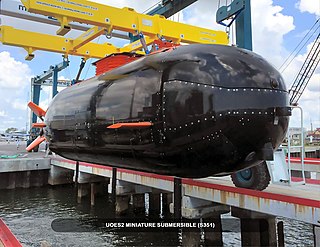
The Dry Combat Submersible (DCS) is a midget submarine delivered to USSOCOM by Lockheed Martin. Lockheed Martin were nominated as the prime contractor with Submergence Group as the sub contractor. DCS is designed for use by the United States Navy SEALs for insertion on special operations missions. It will replace the canceled Advanced SEAL Delivery System and will serve alongside the Shallow Water Combat Submersible.